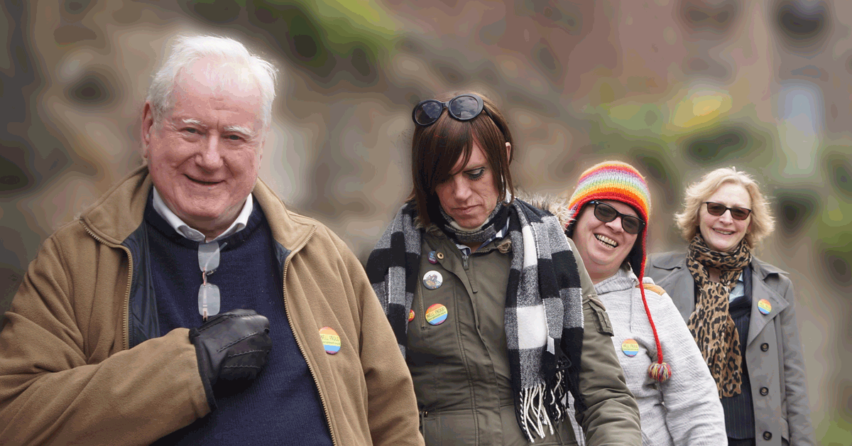Ten Top Tips For Becoming More LGBT Inclusive
A guide for services and organisations working with older people.
Attitudes towards LGBT people have changed a great deal in recent times: the Equality Act (which requires public services to consider the needs of LGBT people and tackle inequality and discrimination) and Equal Marriage represent huge legal landmarks, and discrimination against LGBT people is increasingly unacceptable in society.
However, LGBT people stillregularly face prejudice, harassment and hate crime. Older LGBT people in particular have dealt with serious discrimination throughout their lives. As a result, many older LGBT people fear or expect prejudice from the people around them –including professionals. This makes accessing services difficult; they are also less likely to access preventative support, getting help only when the situation becomes a crisis –sometimes leading to permanent harm which could have been avoided.
Many LGBT people who do access services hide their identities to protect themselves from discrimination. For those receiving care in their own home, this might mean hiding photographs and other things that would suggest that they are LGBT; those moving into residential care might hide their identity completely. For transgender people, personal care may be particularly worrying if their body gives away their transgender status.
Even where there is not outright prejudice, LGBT people are often invisible, or seen as a deviation from the norm. Within services,‘treating everyone the same’ often in practice means treating everyone as heterosexual and/or cisgender(see glossary), which can be difficult for LGBT people who have to correct assumptions all the time as a result.
These days, many professionals are keen to make sure that they are inclusive and welcoming. But it’s something which hasn’t always been talked about, and often it can be difficult to know where to start. This resource will give you some practical strategies for becoming more inclusive, explaining the reasoning behind them along the way. It can be used with the LGBT Age Audit Tool to help you assess how your organisation is doing, and come up with ways to improve. It is designed to help you go beyond tolerance to promote acceptance and active inclusion, embracing LGBT people for who they are and providing the best care and support possibleto them.
Download file
